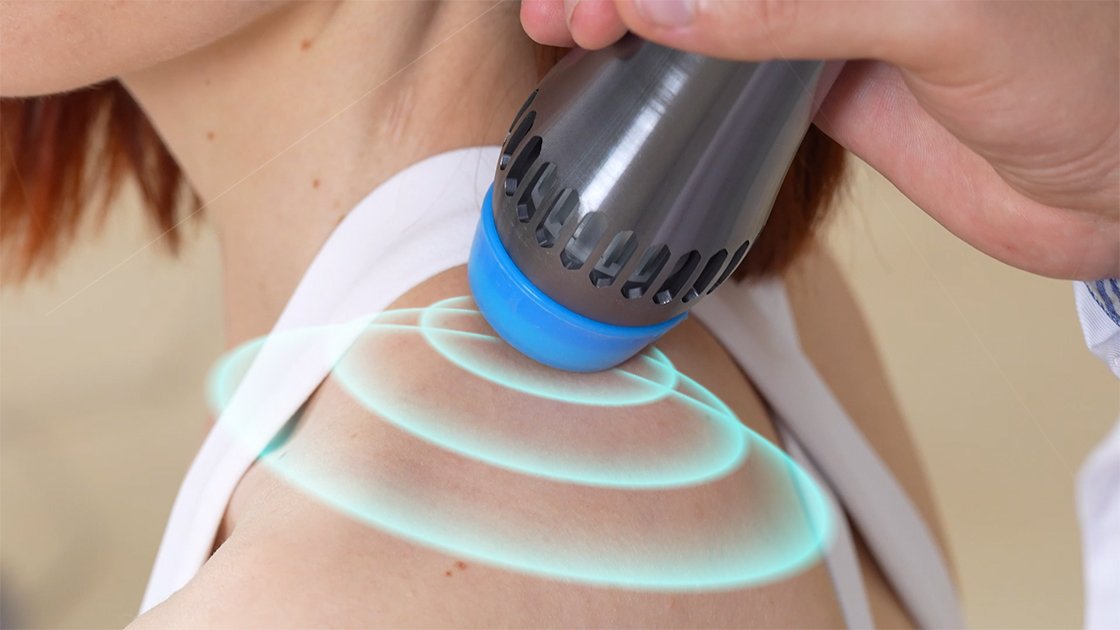Introduction: Brace for Impact!
If you’ve ever wondered what it’s like to feel a shockwave, you’re not alone. Shockwave therapy has become a popular treatment for pain management and injury recovery, but it’s not your typical therapy. The sensation it creates is distinct—and for some, it’s a bit of a surprise. Whether you’re using shockwave therapy to treat chronic pain, muscle injuries, or even conditions like plantar fasciitis, the experience is unlike anything else. Here’s a deep dive into what you can expect from this unique treatment.
The Initial Feeling: What Hits First?
When the shockwave therapy begins, the first thing you’ll feel is a quick, powerful pulse of energy. Shockwaves are high-energy sound waves that travel through tissues, and as they enter your body, they create an intense, quick pressure. Many patients describe this feeling as a rapid tapping or thudding sensation, much like being gently but firmly struck by a rubber mallet. The sensation is localized to the treatment area and can vary in intensity depending on your sensitivity and the setting of the device. You may experience this initial feeling as somewhat uncomfortable, but it’s not usually painful. Think of it like a firm massage—where the pressure is enough to feel, but not overwhelming. Some people liken it to a deep muscle vibration that’s deeper than anything a traditional massage could achieve.
Sensory Experience: Is It Painful or Just Weird?
The big question for many is: “Is it painful?” The answer can vary depending on the area of treatment and individual pain tolerance, but for most people, it’s not so much about pain as it is about the sensation of intensity. Shockwave therapy works by stimulating the tissues deep beneath the skin, and the sensation is felt on the surface but also deep in the muscles, tendons, and ligaments.
It’s important to note that the discomfort usually subsides once your body becomes accustomed to the treatment. The waves travel at a very high speed (roughly 1,500 meters per second), causing the tissue to vibrate and temporarily increase blood flow. This is what helps the body heal by promoting collagen production and stimulating tissue regeneration. However, the process is designed to provide healing without invasive surgery, which makes the sensation a bit surprising at first, but it’s generally well-tolerated.
For those who are concerned about the pain aspect, it’s worth noting that the shockwave machine’s settings can be adjusted, which means therapists can personalize the treatment to avoid too much discomfort while still providing therapeutic benefits.
The “Aftershocks”: How Does Your Body React After a Shockwave Session?
After a shockwave session, the feeling doesn’t immediately end. In fact, some people experience what could be called “aftershocks.” These are more subtle sensations that come as your body adjusts to the increase in blood flow and the healing process begins.
Immediately following the session, you might feel a warm or slightly tingling sensation as your circulation improves. Blood vessels dilate, delivering more oxygen and nutrients to the tissues that were just treated. You may also notice some soreness, similar to the feeling you get after a good workout or deep massage. This is a sign that your body is healing and regenerating.
Over the next few days, the benefits will start to become more apparent. The pain in the treated area might lessen, and stiffness may be reduced as inflammation decreases. Shockwave therapy encourages tissue regeneration and breaks down scar tissue, which can lead to better mobility and improved function in the long term.
Conclusion: Feeling the Impact and Reaping the Rewards
So, what’s it really like to feel a shockwave? It’s an intense and strange sensation. The treatment delivers high-energy pulses that stimulate deep tissue vibrations. These vibrations increase blood flow, promote collagen production, and break down scar tissue. The experience may feel unusual at first, but it’s designed to encourage your body’s natural healing process.
The takeaway? The sensation is unique, but the results can be life-changing. Whether you’re dealing with chronic pain, muscle injuries, or tendonitis, shockwave therapy can offer relief. It’s a non-invasive treatment that helps you return to normal activities without surgery or long recovery times. If you’re curious, consider speaking to a therapist. Shockwave therapy might surprise you at first, but the positive results will make it worthwhile.
